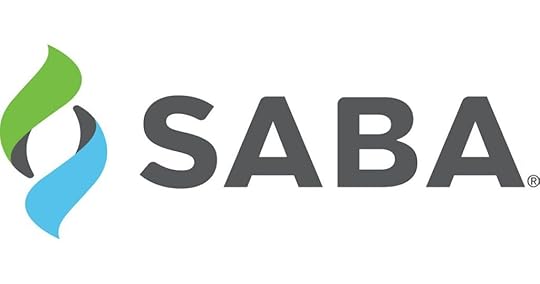How to Convince Senior Management that Training Records are Important – Ask #HR Bartender

I must admit that keeping training records is one of those things
that I’ve always just done without thinking about why. Well, this HR Bartender
reader was challenged to come up with a reason.
Good afternoon, Sharlyn. I’ve had the
pleasure of sitting in on a couple of your presentations at recent SHRM
Conferences, and I’m a fan of your book, “Manager Onboarding.” I’ve noticed
that you answer reader questions and hope that you can assist.
Over the past couple of years, I’ve
been asked a few times why the training and development team logs and maintains
employee attendance records for customer service training, workshops,
leadership training, etc. My usual answers about compliance, liability,
consistency, return-on-investment, performance records, etc. don’t seem
convincing enough. And, delegating this tracking to departments isn’t
consistent with what I’ve learned as training program management best
practices.
Is HR tracking training too old
school? Is there a better way? Do you have any insights or guide me in the
right direction? Thank you for your time.
I’m so
glad this reader shared their situation. My initial thought is that their
“usual answers” about maintaining training records are spot on. But I wanted to
get another perspective, so I reached out to Hawley Kane, head of learning and development at Saba Software. They provide cloud-based talent management solutions, including
enterprise learning, performance management, and collaboration solutions.
Hawley,
let’s start by discussing training records. What are the top five reasons that
organizations track training attendance?
[Kane] Every organization wants to make the most of its learning
and development (L&D) investments, but they don’t know what’s working
unless they have the data to back it up. Training and development teams should
track all learning activities in how they drive performance and business
outcomes. Here’s a quick breakdown of the what
and why:
Learning completion and adoption rates.
Tracking attendance is the simplest metric but
it’s still important! Business leaders need to know how many of their employees
– and often, specifically who – are
taking the available training, including compliance courses, specialized
workshops to upskill, and leadership development courses. Now, tracking
attendance is a good place to start but organizations need to dig deeper into
the data to show the true value of their training programs.Employee engagement impact. Employee
engagement is a key metric that matters to your organization’s leadership
because highly engaged employees can boost performance, innovation and
productivity while reducing turnover and hiring-related costs. One way you can
measure how L&D impacts employee engagement is to track the retention rate
of those who participate in voluntary learning programs compared to everyone
else. It can give you insights into how valuable employees perceive this
voluntary training to be, and whether that correlates to employee retention.Links to employee performance. I’m
going to say this a lot because we
all need to hear it more: Employees need to take on learning and training that
aligns to the organization’s business objectives. Tracking L&D to make the
link between learning and performance is critical in showing the return on
investment (ROI) of your learning programs. Are your top performers
participating in voluntary L&D activities? Which ones? Are they – and their
respective departments – hitting their goals faster and more effectively as a
result? Creating a personalized learning
culture for future success. A recent LinkedIn
Learning report found that employees prefer to learn
at work, at their own pace, and at the point of need. By tracking how, when and
why employees participate in learning activities, organizations can glean the
data they need to get ahead of the curve and enable a personalized learning
experience that gets results.In
this age of digital disruption, skills can become obsolete within months. So it’s critical that an
organization prepares
its workforce for digital transformation. Guiding employee-driven career
development. Tracking training and learning
activities shows an employee’s interests and the skill gaps they’re bridging
(especially the training they’re doing voluntarily). When HR leaders and
managers know an employee’s desired career path and can see the training
they’re doing to get from where they are to where they want to be, they can
give feedback, coaching, and present opportunities for role changes as they
become available.
Now that
we know WHY HR departments track training, HOW should they track it?
Specifically, can technology help?

[Kane] It goes without saying that you need the right strategy and
tools to track employee training so that HR and people leaders can do something
meaningful with the results.
Employee L&D isn’t a one-size-fits-all operation;
organizations need to create personalized learning experiences to maximize the
impact of their training programs. Delivering a personalized learning
experience means the HR technology used to deploy and track learning needs to
be hyper-connected to performance outcomes as well. This puts an employee in
the driver’s seat of their own development experience; an employee’s
challenges, career aspirations, learning preferences, and skills all feed into
a personalized, continuous learning experience.
An organization’s learning platform needs to connect to the
performance side of employee development, which also needs to align to the organization’s business goals. Your HR
technology solution needs a robust analytics dashboard that allows HR, managers
and executive leaders to review team and company learning metrics so that they
can see (in real time) where their people are succeeding and where they – or
the organization – need additional support.
A great example of this in action is when the City of
Houston committed to getting its 22,000+ employees to link learning and
performance, which helped them net a 280
percent return on investment by increasing revenue and decreasing turnover
(not to mention boosting engagement and performance in the process!).
(Editor’s Note: The City of Houston is a Saba Software customer.)
I want to
get a little granular here. The reader talks about departments tracking
training. If the company used a technology solution, can tracking become an
organizational responsibility (versus an HR responsibility)?
[Kane] There’s a growing trend to bring analytics to
decision-makers across the organization so that leaders at all levels can
proactively address learning needs. Learning and training analytics are being
tied into larger developmental and business goals, companywide. Leaders are
increasingly realizing that learning drives performance, which in turn drives
business outcomes. When organizations’ goals are aligned at departmental, team
and individual levels, employees have clarity on what results they’re working
towards.
Using a technology solution makes tracking training so much easier
for both organizations and HR to see what learning programs are working, which
ones aren’t, and what that means for individuals, teams, departments, and the
organization as a whole. HR needs to present itself as a strategic business
partner to the organization and being able to measure, understand, explain and
share the impact of learning outcomes is a key part of demonstrating that
value. Going a step further and teaching others how to do it themselves? That’s
invaluable.
The reader
note mentions “training program management best practices.” Is there a best
practice that organizations should be aware of (tracking or otherwise)?
[Kane] Oh, yes. If learning leaders only do one thing, they should
be linking learning activities to performance outcomes. (I did mention that I’d
say this again!) Learning is only as valuable as the outcome it delivers – to
employees and to the organization. Make sure that managers are encouraging
their direct reports to make time for learning activities and then discuss how
that L&D can be applied in their current or aspirational roles during
their 1:1 meetings.
Remember, in order for this to be effective, organizations need to
have a clear L&D strategy in place. HR and learning leaders need to know what
type of content their people need in order to boost performance and bring value
to the organization. Keep the lines of communication open between learning
leaders and the C-Suite. Delve into the data regularly and ask your people for
feedback. You’d be surprised at the number of valuable insights currently going
unnoticed.

Last
question. What would you say is the “next big thing” when it comes to training
administration?
[Kane] Brandon Hall Group’s research suggests that when it comes
to L&D and metrics, simply linking those learning activities to performance
outcomes are still a huge obstacle for many organizations. Only 51 percent of
companies said they were effective at measuring formal learning – and that
number drops
significantly when it comes to other forms of learning like informal or
experiential. There’s still much work to be done.
That being said, when it comes to the ‘next big thing’ in training
administration, organizations are increasingly shifting towards building a
Learning Experience (LX) model where content discovery, recommendations,
indexing, pathing, and skills mapping, self-published content and usage
analytics help them optimize and personalize employees’ learning experiences.
Tracking and data analytics factor heavily into creating a
personalized employee learning experience, often powered by Learning Experience
Platforms (LXP), Artificial Intelligence (AI) and Machine Learning (ML). Check out
this recent article by Josh Bersin for more information on the
increasing shift towards LX.
Tracking training isn’t a vanity metric. Tracking L&D
activities is a foundational element of building a unique employee experience
and healthy learning culture that benefits both employees and the business, now
and into the future.
I want to extend a huge thanks to Hawley for sharing her knowledge
and experience with us. If you want to stay tuned into the latest learning and
development trends, be sure to check out
the Saba blog. (FYI – I’m one of the guest contributors over there.)
Because of the challenges in recruiting, learning and development is positioned to become a priority. Not that L&D shouldn’t be important all the time, but let’s face it, over the past few years it’s taken a back seat. Being able to show the connection between L&D and organizational outcomes is essential.
Image captured by Sharlyn Lauby after speaking at the Flora Icelandic HR Management Conference in Reykjavik, Iceland
The post How to Convince Senior Management that Training Records are Important – Ask #HR Bartender appeared first on hr bartender.






Sharlyn J. Lauby's Blog
- Sharlyn J. Lauby's profile
- 10 followers



